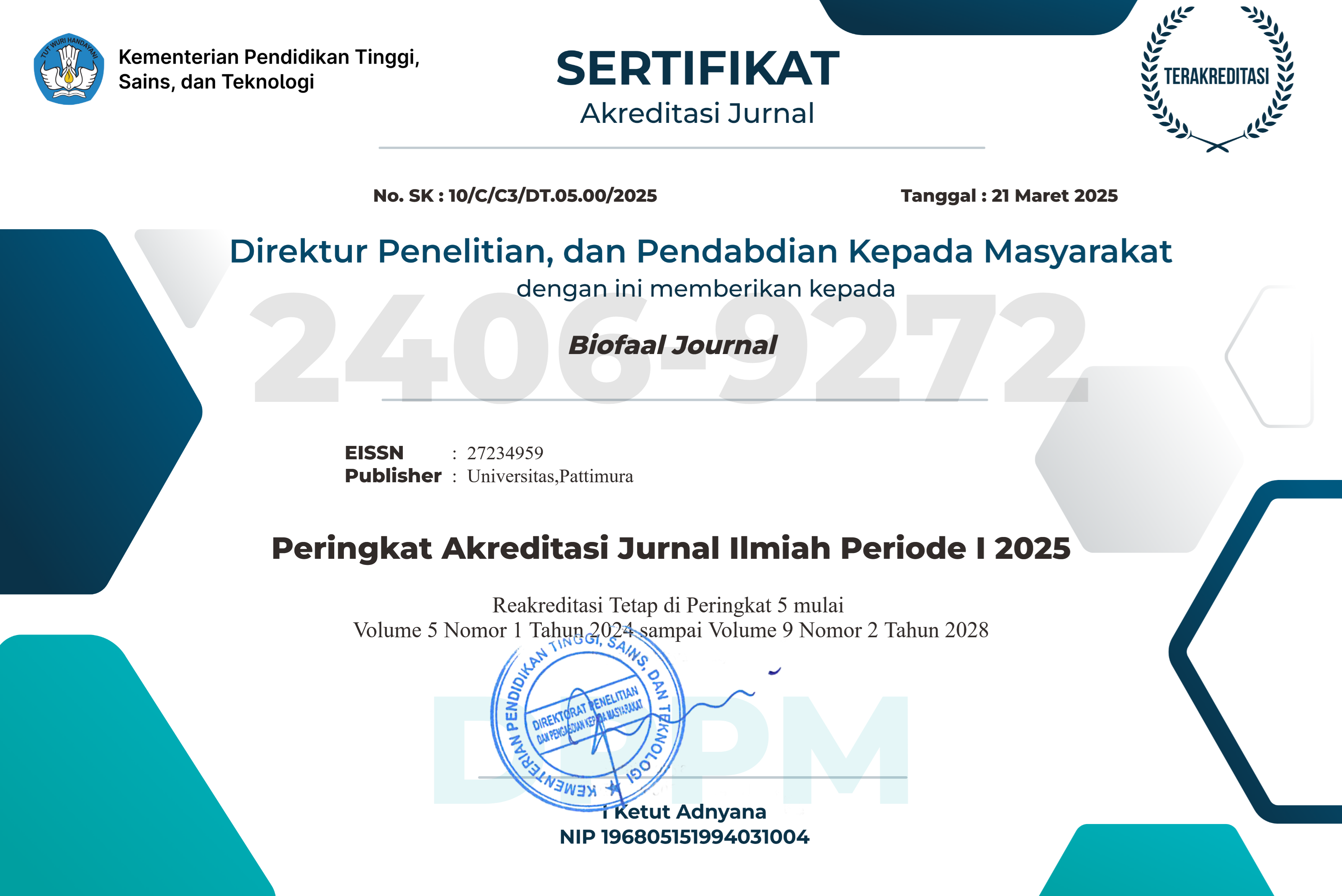FEEDING SYSTEM FOR LAYING HENS IN PATTI VILLAGE, MOA ISLAND, SOUTHWEST MALUKU REGENCY
Abstract
Poultry business has excellent market prospects, because it is supported by the characteristics of products received by the community, affordable prices with access that are easily obtained because it is already a public good. This commodity also plays a real role in food security both in the countryside and in urban areas. Nationally, the poultry industry is the main trigger for the development of business in the livestock subsector. In addition, the development of livestock business both small farms / people and livestock industry is caused by public awareness of the nutritional needs of animal origin. Therefore, it is necessary to develop both livestock businesses, both small businesses and livestock industries. The purpose and benefits of this field skill practice are to observe directly the types of feed given to laying hens, and add insight in preparation for the world of work. In addition, comparing the theory obtained with the conditions on the field. The time of Field Skills Practice activities starts from January to February 2021 at the laying hen farming business in Patti Village, Moa Island, Southwest Maluku Regency. Based on the results obtained, it can be concluded that the FEEDING SYSTEM has not been categorized as good. This is because feeding does not take into account the needs of chicken / tail / day. Therefore, it can affect the level of egg productivity can decrease.
Downloads
Copyright (c) 2021 Albertus Sairudy, Lodia A Tetletlora

This work is licensed under a Creative Commons Attribution-NonCommercial-ShareAlike 4.0 International License.
1. Author retain copyright and grant the journal right of first publication with the work simultaneously licensed under a creative commons attribution license that allow others to share the work within an acknowledgement of the work’s authorship and initial publication of this journal.
2. Authors are able to enter into separate, additional contractual arrangementfor the non-exclusive distribution of the journal’s published version of the work (e.g. acknowledgement of its initial publication in this journal).
3. Authors are permitted and encouraged to post their work online(e.g. in institutional repositories or on their websites) prior to and during the submission process, as it can lead to productive exchanges, as well as earlier and greater citation of published works.








